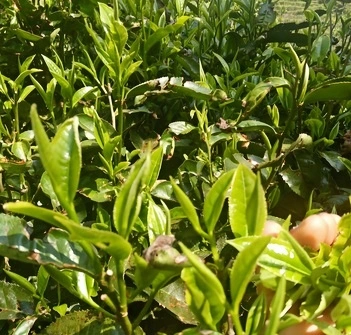Imagine waking up to the warm, earthy aroma of pu-erh tea, steam swirling in soft tendrils as you cradle your favorite mug. The first sip envelops your senses in a rich, velvety embrace—notes of dark cocoa, sun-warmed forest floor, and a delicate hint of minerality. But this isn’t just a decadent morning ritual. What if your daily cup of pu-erh could also help lower your cholesterol, support heart health, and even replace your jittery morning coffee?
In this article, we explore the delicious world of pu erh tea for cholesterol, reveal how this ancient beverage works its magic, and show you how to brew, enjoy, and benefit from pu erh tea as coffee alternative. Get ready to fall in love with a heart-healthy habit that delights the palate and nourishes the body.
Understanding Cholesterol and Heart Health
Cholesterol is a waxy substance found in your blood. While essential for hormone production, vitamin D synthesis, and cell building, excess “bad” LDL cholesterol can build up in artery walls, increasing the risk of heart attack and stroke. Conversely, “good” HDL cholesterol helps ferry harmful LDL particles from your arteries to the liver for removal. Balancing these lipoproteins is key to cardiovascular wellness—and that’s where the gentle power of pu erh tea for cholesterol comes in.
What Is Pu-erh Tea?
Originating from Yunnan Province in China, pu-erh tea undergoes a unique fermentation and aging process. Loose-leaf cakes are carefully stored in humid, temperature-controlled environments, allowing microbial action to transform the leaves over months or even years. The result is a dark, almost amber-hued brew with a smooth, rounded flavor profile that deepens with each infusion. This time-honored craft not only creates an irresistible sensory experience but also generates bioactive compounds linked to health benefits—chief among them, the ability to support healthy cholesterol levels.

How Pu-erh Tea Lowers Cholesterol
Mechanisms Behind Cholesterol Reduction
Research suggests that pu erh tea for cholesterol works through multiple pathways:
- Microbial Fermentation: The proprietary fermentation process yields unique polyphenols and statin-like compounds that may inhibit cholesterol synthesis in the liver.
- Bile Acid Binding: Certain compounds in pu-erh bind to bile acids, encouraging their excretion and prompting the liver to convert more cholesterol into bile.
- Antioxidant Action: Potent antioxidants help prevent the oxidation of LDL particles—a crucial step in plaque formation—and support overall arterial health.
Over time, these synergistic effects can lead to a modest but meaningful reduction in LDL cholesterol and an improvement in the LDL-to-HDL ratio, supporting a resilient, well-nourished heart.
Pu-erh Tea as a Coffee Alternative
If you crave the comforting ritual of a morning brew but want to sidestep the jitters and energy crashes of coffee, consider pu erh tea as coffee alternative. Unlike standard black or green teas, pu-erh offers:
- Gentle Caffeine Lift: Lower and more sustained caffeine levels deliver smooth focus without the spike-and-crash cycle.
- Rich, Bold Flavor: Deep, earthy notes satisfy coffee enthusiasts seeking a robust taste.
- Digestive Comfort: Traditionally served after meals to aid digestion, pu-erh may soothe your stomach rather than stir it.
Make the switch gradually—replace one coffee with a cup of pu-erh to awaken your senses and support your cardiovascular health with every sip.

Brewing Pu-erh Tea for Maximum Benefits
Unlocking the full potential of pu erh tea for cholesterol means brewing with care:
- Choose Quality Leaves: Opt for loose-leaf, aged pu-erh cakes or “tuo cha” from reputable vendors.
- Rinse the Leaves: A quick, 5-second rinse with near-boiling water awakens the leaves and removes surface dust.
- Steeping Temperature: Pour 100°C water over the leaves—too hot, and you risk bitterness; too cool, and extraction is incomplete.
- Steeping Time: Start with 2 minutes for the first infusion, extending by 30 seconds for subsequent brews, up to five infusions.
- Mindful Sipping: Take time to inhale the aroma, swirl gently, and let each velvet sip spread warmth from your lips to your heart.
This ritual not only maximizes the release of cholesterolsupporting compounds but also transforms tea time into a meditative pleasure.
Recommended Pu-erh Tea Dosage and Consumption Tips
To harness the benefits of pu erh tea for cholesterol, consistency is key:
- Daily Intake: Aim for 2–3 cups daily, spaced between meals to optimize absorption.
- Avoid Additives: Drink plain or with a splash of pure water—sugar and cream can blunt the lipid-lowering effects.
- Pair with a Balanced Diet: Complement your tea ritual with heart-healthy foods: leafy greens, whole grains, nuts, and oily fish.
If you’re new to pu-erh, start with one cup per day and gradually increase. Monitor your body’s response, and consult with a healthcare provider if you have any medical conditions or concerns.
Potential Side Effects and Precautions
While pu erh tea for cholesterol is generally safe, be mindful of:
- Caffeine Sensitivity: If you’re sensitive, limit pu-erh to morning hours to avoid sleep disturbances.
- Stomach Upset: High doses on an empty stomach may cause mild discomfort—pair with a light snack.
- Quality Concerns: Seek reputable sources to avoid contamination or low-quality blends.
Pregnant or breastfeeding individuals, and those on anticoagulant medication, should consult their doctor before making pu-erh a daily staple.
FAQs About Pu-erh Tea for Cholesterol
Q1: How long before I see cholesterol improvements?
A1: Most studies observe a modest LDL reduction within 6–12 weeks of daily pu-erh consumption.
Q2: Can I drink pu-erh at night?
A2: Due to its caffeine content, it’s best enjoyed before late afternoon to ensure restful sleep.
Q3: Is ripe (shou) pu-erh better than raw (sheng)?
A3: Both types offer cholesterol-lowering benefits, but fermented shou pu-erh often boasts a smoother flavor and quicker bioactive formation.
Q4: Can pu-erh replace prescription statins?
A4: No—while pu erh tea for cholesterol can support healthy lipid levels, it’s not a substitute for prescribed medication. Always follow your healthcare provider’s advice.
Conclusion: Integrating Pu-erh Tea into a Heart-Healthy Lifestyle
Embracing pu erh tea for cholesterol is more than a simple swap—it’s an invitation to slow down, savor each moment, and nurture your heart from the inside out. Whether you’re seeking a pu erh tea as coffee alternative or a delicious way to support healthy cholesterol, this ancient brew offers a sensory journey and scientifically backed benefits. Begin your ritual today: steep, sip, and feel the warmth of healthier habits bloom with every cup.



